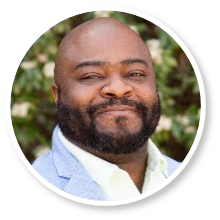Takeaways
- Longstanding systemic and institutional policies and practices make leading health equity work a challenge in most communities. Organizational structures, where hierarchal and power dynamics are often at play, may make it difficult to have transparent and effective conversations about diversity, equity, and inclusion (DEI).
- Over the last several years, state lawmakers and governors in a number of states have introduced legislation and official correspondence that may limit health equity work, including restrictions on the ability of state-funded institutions to support DEI practices and initiatives.
- Despite these barriers, many health care leaders — in state agencies, health plans, health systems, and community-based organizations (CBOs) — continue their commitment and work to advance health equity.
- This brief outlines five key strategies that state policymakers and health equity champions can use to advance health equity planning and implementation efforts, maintain momentum, and still attend to their own wellness in the face of adversity.
State institutions, including Medicaid agencies, can proactively pursue strategies to promote health equity in their communities. These include, for example, collecting data to identify health disparities and collaborating with community members, especially those who are marginalized, to develop programs that will improve experiences and health outcomes. 1 These strategies are even more impactful when state policymakers and organizational leaders have a deep understanding of how internal DEI practices connect to external health equity initiatives. DEI-related activities — including, for example, having open conversations about diverse representation at the staff and leadership levels, creating a sense of belonging for individuals with identities that are marginalized, and fostering spaces for meaningful connections — can directly impact how state and organizational leaders partner with communities to advance health equity. 2 Health inequities can worsen when these processes are hindered by adverse environments caused by systemic and institutional structures, organizational culture, and legislation or other official policies.
In recent years, a number of states have introduced bills or released communications that make it difficult for government agencies and other state-funded entities, such as public colleges and universities, to create, continue, or even discuss DEI-related initiatives.3 In many states, these restrictions, long-standing structural racism-related laws, and other policies have impacted how policymakers, CBOs, providers, and advocates engage in health equity work within their communities.4 In addition to formal restrictions and regulations, barriers and resistance to change may already exist in organizations and institutions, especially regarding DEI-related projects. Despite these limitations, many health care stakeholders continue to make progress toward health equity through strategic planning, thoughtful messaging, aligning with funding and other opportunities, and by implementing initiatives that resonate with their audiences.
Understanding the environment and identifying opportunities to overcome barriers and restrictions are critical to advancing health equity. With this in mind, the Center for Health Care Strategies (CHCS), in partnership with Dana E. Crawford and through support from Genentech, undertook an exploration to:
- Better understand the impact of working within regulated environments that limit engaging in health equity work.
- Uncover how advocates strategize and advance health equity goals despite cultural and environmental barriers within their organizations and externally.
Project Overview
With support from Genentech, the Center for Health Care Strategies, together with key partners, embarked on an exploration focused on identifying strategies to maintain momentum and advance health equity goals despite the cultural and environmental barriers that are too often present within organizations and externally. We are grateful to the following advisors and collective partners who generously shared their expertise, experiences, and perspectives to guide and strengthen this project.
Advisory Committee Members: Monica Baskin, PhD, Ignatius Bau, JD, Desiree Collins-Bradley, Anisha Gandhi, PhD, and Jamil Rivers
Collective: Danica Richards, Tricia McGinnis, Lauren Moran, Niiobli Armah IV, Kiwasi Apeh, Dallas Ducar, Dana Flannery, David Hicks, Karen Kimsey, Megan Lisch, Victor Murray, Julie Nelson, Kolynda Parker, Anna Rondon, Chris Salyers, Deborah Sisco, and Kevin Wake
Guided by an advisory committee comprised of people with lived experience with a marginalized identity and professional health equity expertise, CHCS and partners conducted a literature review, interviewed state officials, health care providers, and community leaders, and hosted a small group convening. This brief highlights insights from these conversations and provides strategies to help health care partners advance health equity in adverse environments.
Personal Reflections
Each author brings professional expertise and lived experiences to this project. To capture the importance of these lived experiences, the authors have shared their reflections.

Abena Ohene-Ntow — When individuals come together to have necessary conversations about injustice, they are likely to experience discomfort, pain, and tension. However, nourishment, empowerment, and joy can also arise. What’s magical is that these feelings can co-exist to drive meaningful behavioral and environmental change that will make our health systems, institutions, and communities more equitable and just. As a first-generation Ghanaian-American woman, gratitude filled my soul as I listened to committed leaders share their experiences and strategies in advancing equity, despite external and internal restrictions. After reading this brief, may hopefulness fill yours.

Jahira Sterling — Health equity promotes equality for access to health care and health services that can support individuals impacted by social intersections including, but not limited to, socioeconomic status, class, race, ethnicity, age, sexuality, and other identities. Policymakers and advocates who work in the health care sector can help implement programs and policies to ensure fairness and equality. As a person with lived experience as a first-generation Caribbean-American with lineage from Guyana and Jamaica, I believe this project helped identify strategies to support communities that have been historically marginalized and face discrimination in health care. Meeting with key interviewees across the nation helped increase my motivation to continue to break down barriers of oppression and advocate for those who are underrepresented in health care.

Jamye Chapman — The power of people who have been marginalized leading work intended to equitize health systems and outcomes is undeniable. Representation matters when attempting to create a psychologically safe space where people can share their stories and experiences without fear of judgment or retribution. A space that is free of judgment and prejudice builds empathy, understanding, and mutual respect, which is the basis for equity in any setting. We should strive to create equitable spaces where everyone can have their voices heard and feel safe regardless of their identity or background. This means creating structural changes such as policies, legislation, funding opportunities, at all levels in which marginalized identities are excluded from decision-making processes.

Dana E. Crawford — The voices of people with lived experience who face tremendous consequences of inequity must be centered. Too often, academic expertise has silenced community wisdom, business has been prioritized over bodies, and internalized trauma has driven reactions. This project demonstrated the need to have multiple partners involved in policy development and implementation. It was an honor to be reminded of how critical it is to amplify the voices of those providing health care in minoritized communities. These valuable health equity champions have specific and essential knowledge to help us move to a more inclusive health care system.

Shilpa Patel — Health equity work has and will continue to happen despite challenging contexts. I am grateful to the individuals who engaged in this project, and our related project. Thank you for sharing your experiences, frustrations, and your joy. I hope we can honor your call to action in reimaging the structures and processes that perpetuate disparities and inequities, as well as centering and celebrating individuals with lived experience as part of that process.
Five Strategies to Advance Health Equity in Adverse Environments
The following strategies, drawn from a national literature review, interviews, and an in-person expert convening described above, can help public sector officials and health equity champions navigate tense and complex environments and advance health equity initiatives.
1. Build and Develop Internal Organizational Structures and Processes
2. Tailor Messaging and Communications
3. Engage in Community-Driven Interventions
4. Commit to Progress and Humility
5. Prioritize Purpose, Professional Development, and Self and Collective Care

1. Build and Develop Internal Organizational Structures and Processes
Supportive internal structures can help leaders create coherence between external and internal environments and ensure that colleagues are working toward a shared mission. It is important to create a workplace where staff are given the resources to advance health equity goals by incorporating their expertise and lived experiences into decision-making.5This includes providing regular opportunities to learn, create, strategize, and collaborate. Steps to foster this kind of environment include:
- Create action-oriented workgroups to drive change. Dedicated workgroups can invest time in internal culture and operations. For example, Louisiana’s Medicaid agency developed health equity action teams (HEATs) that are responsible for leading all health equity activities within their agencies. As outlined in Louisiana Department of Health’s (LDH) Health Equity Action Plan, each HEAT is comprised of co-chairs, community ambassadors, and LDH team members who are “working to assess, understand, and improve existing practices and policies, as well as deliver intentional strategies that will build health equity and be informed by . . . Louisiana’s health disparities and inequities.6
HEATs advocate for funding for trainings, work closely with managed care organizations to reduce health disparities, and develop internal resources to promote health equity. One key HEAT achievement is the creation of a health equity language tool to ensure the use of inclusive language in Medicaid documents.7 In states and contexts where leaders cannot be as explicit about the name of the internal committee, individuals can think creatively about a neutral title, such as a member experience workgroup or an organizational culture committee.
Under Governor Ralph Northam’s administration, Virginia Medicaid’s senior leadership team developed an internal committee to focus on workplace DEI initiatives. The committee created a charter to clearly outline their goals and commitment to enhancing DEI in the workplace. One of the tasks of the group was to administer an engagement survey to better understand the experiences of employees. Employees indicated there were inequities in some staff salaries compared to their peers in the survey responses. To further investigate this, the leadership team conducted a review of staff salaries. Findings revealed that salaries were lower for women, particularly women of color, compared to other staff. The data from this effort helped build the case for equitable changes within the organization and salaries were adjusted to eliminate disparities in pay.
- Obtain external support and resources for organizational development. Long-term training and technical assistance can help organizations in exploratory and implementation phases of health equity work. For instance, the National Organization of State Offices of Rural Health, headquartered in Michigan, partnered with a technical assistance consultant to develop and operationalize the organization’s health equity plan. This was particularly helpful when the organization’s staff felt stuck with definitions and strategies to advance organizational goals related to health equity.
In another example, Transhealth, a health care organization in Massachusetts that supports and empowers trans and gender-diverse individuals and families, recently hired consultants to conduct two executive recruitment searches. The organization’s leadership is primarily white and committed to hiring transgender leaders from Black, Indigenous, or other communities of color to better reflect the people the organization serves. Transhealth also worked with various consultants to help staff understand their biases and how these may appear in patient and employee interactions.
We-Collab, a Texas-based equity strategy consulting firm that helps organizations build internal capacity to engage in equity work, observed that one organization was experiencing difficulties in implementing their health equity plan. There were barriers to garnering senior leadership buy-in. In response, We‑Collab provided individual leadership coaching for the organization’s mid-level managers and helped them implement their health equity plan. The mid-level managers began to push for internal changes, shift organizational culture, and advance DEI goals.

2. Tailor Messaging and Communications
Advocates can advance health equity efforts by thinking strategically about what motivates their target audiences and tailoring messaging, both internal and external, accordingly. For example, leadership in health care systems may be more amenable to engaging in health equity work if it improves patient experience, health outcomes, or financial savings. By understanding what matters to the audience, health equity champions can tailor their communications efforts. Data can also help leaders craft relevant messaging. Examples of tailored messaging and communications include:
- Use language that resonates with your audience using shared values. Leaders can design their communications strategy to foster buy-in when they take the time to understand the needs and preferences of their community. In some communities, framing about equity and justice may turn people off and prevent them from fully participating in this necessary work. For other audiences, making the business case by demonstrating the positive financial outcomes that can result in reducing disparities is compelling and aligns with their business strategy.8 It is important for leaders to strategize how they can empower and communicate with communities to address inequities.
For instance, Black Birthworkers Rock (BBWR), an international community-based organization headquartered in Florida, focuses on grassroots efforts to transform communities and improve outcomes for birthing individuals. The organization manages a national birth professional directory created to support birthing individuals seeking Black birthworkers (e.g., doula, midwife, childbirth educator, lactation consultant, nutrition coach, etc.) to help them on their birthing or postpartum journey. BBWR also provides professional development training and other support services for birthworkers to build sustainable public health business models. BBWR builds momentum across political differences by using specific language to describe the organization’s vision. The founder stated “I am not a social justice or reproductive organization. I’m a community-based organization focused on community access and well-being through public health initiatives. I’m passionate about the work that I do and the language that I use.” BBWR builds deeper community relationships through its communications messaging to enhance access to supportive services for birthing individuals and birth professionals.
Similarly, Transhealth’s CEO intentionally uses terms that resonate with core American values when speaking about trans rights. For example, she explains that trans people should have the “freedom and liberty” and “the right” to “live their truth” about their identity. This strategy is especially helpful for what some advocates call “the movable middle,” the group between allies and those opposed to the rights of lesbian, gay, bisexual, transgender, queer/questioning and other (LGBTQ+) people.9 This group can be more supportive of LGBTQ+ rights if they receive the appropriate education about issues facing this community.
Race Forward is a national racial justice organization that uses a “targeted universalism” strategy that can be effective in many environments. Targeted universalism emphasizes that addressing inequities for a specific population has the potential to improve outcomes for all.10 This is especially helpful in communities where harmful laws that target racially or ethnically minoritized groups exist. These laws can have far-reaching consequences for people of all racialized groups because they undermine public infrastructure, resources, and democracy.11 For example, messaging about mass incarceration typically focuses on the negative impacts on Black and Latino men. Targeted universalism starts with a shared goal, and then targets interventions for particularly impacted communities, helping to close gaps and positively impact outcomes for all groups. The work to end mass incarceration benefits everyone collectively, and improves social, economic, and health outcomes. Individuals who work on other issues, such as improving birth outcomes or enhancing food security may find targeted universalism useful for garnering more support from a broad swath of potential partners.
- Use data-informed and evidence-based solutions to strengthen messaging. Data can help make the case for equity-focused actions and solutions to decision-makers. For example, once it became clear to staff at Louisiana’s Medicaid agency that there were not enough providers in rural communities compared to urban neighborhoods, the staff reflected on how these differences created barriers to care, which can lead to poor health outcomes and increased health care costs. The agency partnered with managed care organizations to increase the number of providers and telemedicine/telehealth offerings in rural communities to help improve access to care for individuals with Medicaid.
In general, maps, scorecards, and other graphic tools can be valuable as visual representations of identified gaps and opportunities for improvement. Using data-informed visuals can help communicate the stories behind the issues and progress in the community.

3. Engage in Community-Driven Interventions
Community members have the context and personal experience to identify issues, brainstorm solutions, and move toward action. Grassroots organizing and advocacy often focuses on amplifying community members’ voices and building collective action. State agencies and other organizations can provide the resources and invite community members to shape decisions that improve health equity, especially when these individuals may have limited financial and capacity building resources to lead these efforts.12 Community members should be supported and fairly compensated for their time and expertise.13 This could be in the form of a stipend, gift card, and/or reimbursement for transportation, among others.
- Explore meaningful ways to partner with and support communities. In Alabama, state public health officials knew that Spanish-speaking undocumented immigrants and their families were hesitant to connect with state government agencies due to fear of immigration policy enforcement. During the worst months of the COVID-19 pandemic, volunteers and state public health staff collaborated with Spanish-speaking doctors and grassroots organizations to provide support to this community. They knocked on doors to better understand the community’s concerns about the COVID-19 vaccines, provided information to help individuals make informed decisions, and shared safe and comfortable vaccination locations. Because of these proactive efforts to partner with trusted voices in the community, the state had high vaccination rates among the Spanish-speaking population. An interviewee shared, “I think we need to acknowledge that government has power; however, our power has led to disparate health outcomes and inequities. We have resources and the community knows what it needs.” Government agencies and other organizations can support community and CBO-led efforts to engage in health equity work by providing financial support and other resources to advance health equity goals.
Similarly, community organizers in Indigenous nations and communities are collaborating with “bridge organizations” that can help foster better partnerships with state officials. The New Mexico Social Justice Equity Institute, a nonprofit organization with strong relationships in Indigenous communities, partners with the state to better understand what resources are available and relays accurate information to community leaders. This feedback loop improves communication between states and Indigenous communities and ensures that supports are available to them. The partnership is effective because the organization takes time to listen to the concerns of the Indigenous communities and partners with them to develop community-driven relationships with state officials.

4. Commit to Progress and Humility
Those working to advance health equity are likely to experience feelings of fear, defeat, and hopelessness, especially when working in adverse environments. Staying focused on making progress and celebrating the wins, no matter how big or small, can help move work forward. As one advisory committee member noted, “Incremental is monumental.” At the same time, it is important to remain humble in the path to health equity by admitting mistakes along the way and being transparent about personal or environmental challenges hindering progress. A few ways to maintain momentum include:
- Determine the right pace and approach based on your audiences’ needs. Communities have unique characteristics; a “one size fits all” approach can be harmful. As noted by one interviewee, not all initiatives work for every community when it comes to developing strategies to promote health equity on the local level. Simply because one community is not progressing at the same speed as another, does not mean that the community is not advancing at all. This is important to keep in mind, especially during health equity planning and implementation efforts.
Another interviewee shared the “hammer concept,” a strategy where organizational leadership mentions a goal multiple times, in different ways, and uses repetition to “hammer” ideas to the target audience. Planning the pace is important, because staff typically need to hear ideas several times and in different ways. This is especially helpful when leaders are not getting traction when they first introduce a health-equity related initiative. Using this strategy can also help foster conversations about what may not be resonating with the audience and provide an opportunity to problem-solve.
- Promote progress at the individual level. To assuage individual concerns about health equity and facilitate progress, health equity champions can engage in one-on-one conversations about new initiatives before larger meetings to relate to colleagues and potential partners on a personal level. One interviewee shared, “When one person sets a negative tone, folks tend to pile on similar sentiments. My approach is to meet with individuals one-on-one so that I am more prepared for what may come up during the group meeting.”
- Align with funding and other opportunities. When state agencies are prohibited in moving forward with internal DEI work, leaders should consider engaging in other activities that advance programmatic health equity goals. For example, many state Medicaid agencies are using policy levers to address inequities.14 To improve health outcomes for Black birthing individuals, Medicaid state agencies have pursued eligibility coverage and benefit expansions to make progress on this health disparity.15,16 The federal Centers for Medicare & Medicaid Services has prioritized health equity and is incorporating equity requirements in both payment and health care system transformation models.17
- Link health equity with quality and accreditation. Organizations such as the Joint Commission and the National Committee for Quality Assurance have released accreditation and certification standards related to health equity for hospitals, health care systems, and plans. Obtaining and maintaining accreditation can advance organizational strategies and reputation while also bolstering health equity infrastructure and capacity.
- Be transparent. Working in adverse environments can cause leaders to be fearful of making mistakes. However, learning and growing is an inevitable process of leading health equity work. We-Collab’s founder suggests that policymakers should practice making space for the difficult statements and the uncomfortable, but necessary, questions they may have to ask. This strategy empowers leaders to be honest about their insecurities and more confident in their delivery. Similarly, organizations should be honest when harm has been caused and explain how they plan to support restorative and healing-centered practices, in addition to preventing the replication of future harm in their health equity journey. For example, in 2022, the Milbank Memorial Fund released an official apology for their role in the decades-long, unethical U.S. Public Health Service Untreated Syphilis Study at Tuskegee in Macon County, Alabama, and made a financial commitment to a group of descendants.18 This level of transparency can support leaders in having intentional conversations about their involvement in health equity work and how they can continue to evolve in their implementation strategies.

5. Prioritize Purpose, Professional Development, and Self and Collective Care
Health equity leaders frequently experience burnout, moral injury, and pessimism.19 Being grounded in one’s purpose, professional development, and both self and collective care can play a critical role when pursuing health equity and social justice work. It is important for organizations to explore how they can create supportive spaces for their staff. The following practices can help individuals maintain their physical and mental well-being by connecting their work to their purpose and committing themselves to self-development.
- Identify your purpose. Connecting to one’s purpose through prayer, meditation, and nature helps ground leaders, especially on difficult days. One interviewee stated, “God has given me this position and I can’t squander it.” For them, addressing health disparities and fighting for justice is a personal mission that serves a greater purpose. A member of the Indigenous community described the connection to their ancestors and spiritual ceremonies as healing experiences. Reflecting on their ancestors’ journeys builds their strength and helps them to persevere.
Organizational leaders can help staff understand why their role matters for achieving health equity goals. Sometimes staff, particularly those in non-programmatic or entry-level roles, cannot clearly see how their job relates to health equity. It is important for organizations to have ongoing dialogue to connect staff to the organization’s vision and purpose for advancing health equity. These conversations can help people to have an equity mindset and motivate them to meaningfully identify ways to contribute to the mission.
- Engage in professional development activities. Professional development helps leaders strengthen their skills and learn new approaches to navigating setbacks. One of the ways organizations can promote self-transformation is to redesign organizational policies to advance professional and leadership development. Some organizations provide one-on-one leadership coaching and access to professional development opportunities for senior leaders and other members of the staff. One example of this is the Center for Health Care Strategies’ Equity Changemakers Institute, a leadership development program that supports public sector leaders who have significant oversight over agency efforts to advance health equity.20 The program helps to strengthen their skills to drive transformational change and positively impact the health of those who live in their states/territories.
- Explore ways to practice self and collective care. For leaders looking to refuel and reaffirm their commitment to this work, engaging in collective care is equally as important as personal self-care.21 The founder of We-Collab attends an annual retreat to connect and draw inspiration from like-minded leaders in the field to keep him grounded in his purpose for this work. Creating spaces for health equity champions to be open and vulnerable about their experiences helps them to learn, heal, and build a network of support. Interviewees and participants of the small group convening collectively shared appreciation for these necessary conversations about leading health equity work in an intimate group setting.
Through this process of purpose searching, professional development, and self and collective care, it is important to reflect on the journey. When a role is no longer fulfilling personal and professional goals, it is okay to step away. One advisory committee member said, “It’s not a sprint, it’s not a marathon, it’s a relay race. You’ve ran as fast as you can, and now it’s time to pass the baton to someone else.” Stepping away from a position and finding another opportunity that brings you peace is sometimes necessary.
Conclusion
Leading health equity work is not easy. In many places, it is getting even more difficult due to official restrictions, workplace cultures that do not prioritize health equity, and other organizational or budgetary constraints. Constant internal and external political shifts require individuals to be strategic and tactful in how they approach health equity issues. Strategies outlined in this brief have the potential to establish positive change within organizational culture and build supportive environments for health equity leaders and community members to continue this vitally important work. State agencies, health care organizations, and CBOs are more resilient and better equipped to manage adverse environments when they build strong internal and external supports and partnerships to advance health equity.
ABOUT THE CENTER FOR HEALTH CARE STRATEGIES
The Center for Health Care Strategies (CHCS) is a policy design and implementation partner devoted to improving out comes for people enrolled in Medicaid. We support partners across sectors and disciplines to make more effective, efficient, and equitable care possible for millions of people across the nation. For more information, visit www.chcs.org.
Endnotes
- A. Spencer and A. Ohene-Ntow. Engaging Communities of Color to Promote Health Equity: Five Lessons from New York-Based Health Care Organizations. Center for Health Care Strategies, December 2023. Available at: https://www.chcs.org/media/Engaging-Communities-of-Color-to-Promote-Health-Equity-Brief_121522.pdf
- A. Ohene-Ntow and T. Enos. Becoming a More Inclusive Leader. Center for Health Care Strategies, July 2023. Available at: https://www.chcs.org/becoming-a-more-inclusive-leader/
- J. Bryant and C. Appleby. “These States’ Anti-DEI Legislation May Impact Higher Education.” Best Colleges, May 22, 2023.Available at: https://www.bestcolleges.com/news/anti-dei-legislation-tracker/
- J. Jahn, D. Zubizarreta, J. Chen, B. Needham, G. Samari, A. McGregor, et al. “Legislating Inequity: Structural Racism In Groups of State Laws and Associations with Premature Mortality Rates.” Health Affairs, October 2023. Available at: https://www.healthaffairs.org/doi/full/10.1377/hlthaff.2023.00471
- A. Ohene-Ntow. Celebrating Black Women Leaders in Medicaid. Center for Health Care Strategies, June 2023. Available at: https://www.chcs.org/celebrating-black-women-leaders-in-medicaid/
- Louisiana Department of Health. Phase 1 Health Equity Plan. February 20, 2020. Available at: https://ldh.la.gov/assets/cphe/Equity_Framework.pdf
- Louisiana Department of Health. Louisiana Medicaid Health Equity Language Tool. January 12, 2022. Available at: https://www.chcs.org/media/Medicaid-Health-Equity-Language-Tool_1-2022.pdf
- J. Goodman, J. Barfield, D. Smith. “How to Advance Health Equity While Improving Your Bottom Line.” Bain and Company, October 23, 2023. Available at https://www.bain.com/insights/how-to-advance-health-equity-while-improving-your-bottom-line/
- GLAAD and Them. “Why Queer Activists Should Direct Their Message to the ‘Movable Middle.’” Them, April 24, 2019. Available at: https://www.them.us/story/movable-middle-glaad
- Othering and Belonging Institute, University of California, Berkley. Creating a Targeted Universalism Framework. Available at: https://belonging.berkeley.edu/creating-targeted-universalism-framework
- J. Jahn, et al., op. cit.
- C. Roman. Beyond a Seat at the Table: Design Considerations for Effective Medicaid Community Advisory Committees. Center for Health Care Strategies, July 2023. Available at: https://www.chcs.org/beyond-a-seat-at-the-table-design-considerations-for-effective-medicaid-community-advisory-committees/
- A. Spencer and L. Scannelli Jacobs. Engaging Community Members: A Guide to Equitable Compensation. Center for Health Care Strategies, October 2023. Available at: https://www.chcs.org/media/Engaging-Community-Members-A-Guide-to-Equitable-Compensation_101723.pdf
- Medicaid and CHIP Payment and Access Commission. Medicaid’s Role in Advancing Health Equity. June 2022. Available at: https://www.macpac.gov/wp-content/uploads/2022/06/Chapter-6-Medicaids-Role-in-Advancing-Health-Equity.pdf
- Kaiser Family Foundation. “Medicaid Postpartum Coverage Extension Tracker.” September 2023. Available at: https://www.kff.org/medicaid/issue-brief/medicaid-postpartum-coverage-extension-tracker/
- P. Khanal, A. Benyo, K. Silverman, and A. Maul. Covering Doula Services Under Medicaid: Design and Implementation Considerations for Promoting Access and Health Equity. Center for Health Care Strategies, December 2022. Available at: https://www.chcs.org/media/Covering-Doula-Services-Under-Medicaid-Brief_120822.pdf
- Centers of Medicare & Medicaid Services. “CMS Framework for Health Equity 2022-2032.” April 2022. Available at: https://www.cms.gov/files/document/cms-framework-health-equity-2022.pdf
- C. Koller. Harms and Healing. Milbank Memorial Fund, April 2022. Available at: https://www.milbank.org/2022/04/harms-and-healing/
- Syracuse University. The Moral Injury Project. “What is Moral Injury?” Available at: https://moralinjuryproject.syr.edu/about-moral-injury/
- Center for Health Care Strategies. “Equity Changemakers Institute.” Available at: https://www.chcs.org/project/equity-changemakers-institute/
- The 25 Percent. “Self-care and collective care.” Available at: https://the25percent.eu/hub/handbook/chapter-2/self-care-and-collective-care/




